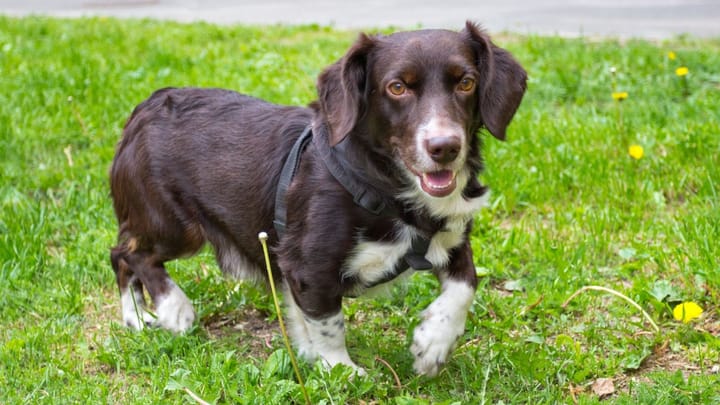Westphalian Dachsbracke
Other name: Westphalian Hound

The Westphalian Dachsbracke is a rare breed from Germany. It is nowadays mostly bred in Scandinavian countries and used for the control of pests and game. It came about due to a need of a hunting dog that was small enough to follow badgers and foxes into their burrows. ‘Dachs’ is the Germanic word meaning ‘badger’, and ‘Bracke’ is the plural word meaning ‘scent hounds’.
|
Life expectancy |
The Westphalian Dachsbracke has a life expectancy of between 11 and 13 years |
|
Temperament |
|
|
Size |
Medium
|
|
Adult size |
Female
Between 12 and 15 in
Male
Between 12 and 15 in
|
|
Adult weight |
Female
Between 31 and 33 lb
Male
Between 31 and 33 lb
|
|
Coat colour
Usually white fur on the chest, collar, muzzle and legs; the rest of the body is usually coloured red and yellow or black and white. |
Black White Red Sand |
|
Type of coat
Long over the back; short elsewhere Coarse, short-haired, single coat. |
Short |
|
Eye colour
Dark |
Brown
|
To socialise a young Westphalian is worthwhile. Dogs that have been introduced to other dogs and other animals are less likely to exhibit behaviour that is antisocial or unwanted.
More details about the Westphalian Dachsbracke
Westphalian Dachsbracke: Origins and history
The Westphalian Dachsbracke was first described in 1886. It is thought to have been bred from a crossing of the Swedish scenthound with a dog such as a Dachshund, but such a claim is unverified. It is not a registered pedigree of the UK’s Kennel Club but may appear from time to time in the groups of the lesser scent hounds.
Physical characteristics of the Westphalian Dachsbracke
A short-legged dog of a dignified appearance; the Westphalian is a stocky, compact and powerful dog. The tail is carried as a ‘sabre’: slightly upwards when the dog is active. The back of the dog is slightly arched leading to a long and slender neck. Ears are high and broad and hang close to the cheek.
FCI classification of the Westphalian Dachsbracke
-
Group 6 - Scent hounds and related breeds
-
Section 1 : Scent hounds
Westphalian Dachsbracke: Characteristics
Westphalian Dachsbracke: Behaviour
Training a Westphalian Dachsbracke
To train the Westphalian Dachsbracke requires the owner to deliver consistent and confident training. This is a dog that is easily distracted and quick to boredom.
Westphalian Dachsbracke: Lifestyle
Breed compatibility Westphalian Dachsbracke
Westphalian Dachsbracke: Purchase price
We do not have enough data to set an average price for an Westphalian Dachsbracke. You’re also looking at between £120 to £150 per month to care for this dog.
Westphalian Dachsbracke: Shedding
Average
The Westphalian Dachsbracke sheds moderately.
Westphalian Dachsbracke: Grooming
Brush the Westphalia once or twice a week to prevent its coarse coat from becoming matted and tangled. Do not bath this dog too often; bathe only when necessary. Check beneath the dog’s large ear pinna on a regular basis.
Westphalian Dachsbracke: Health
11 to 13 years
This is an active and energetic dog that likes nothing better than a day of outdoor exploration.
The Westphalian Dachsbracke is not especially tolerant of hot temperatures.
The Westphalian Dachsbracke will adapt to cold climes. It is a popular choice of dog for alpine hunters.
The Westphalian Dachsbracke is more prone to weight gain than most. If your dog is not exercised as regularly as it should be and is fed too much human or substandard food it will quickly become obese.
- Spinal Issues
- Ear Infections
- Obesity
- Eye Problems
Do you want a Westphalian Dachsbracke dog ?
Oh no...
There are no Westphalian Dachsbracke adoption profiles at the moment...

